| Weight | 1 lbs |
|---|---|
| Dimensions | 9 × 5 × 2 in |
| host | rabbit |
| isotype | IgG |
| clonality | polyclonal |
| concentration | 1 mg/mL |
| applications | ICC/IF, WB |
| reactivity | c-Jun (Phospho-Ser73) |
| available sizes | 100 µL |
rabbit anti-c-Jun (Phospho-Ser73) polyclonal antibody 1603
$366.00
Antibody summary
- Rabbit polyclonal to c-Jun (Phospho-Ser73)
- Suitable for: WB,IHC
- Isotype: Whole IgG
- 100 µl
rabbit anti-c-Jun (Phospho-Ser73) polyclonal antibody 1603
| antibody |
|---|
| Tested applications WB,IHC,IHC |
| Recommended dilutions Western blotting: use at dilution of 1:500- 1:1,000. A band of ~43kDa is detected. Immunohistochemistry: use at dilution of 1:50- 1:100. These are recommended working dilutions. End user should determine optimal dilutions for their applications. |
| Immunogen Peptide sequence that includes phosphorylation site of Serine 73 (L-A-S(p)-P-E) derived from human c-Jun and conjugated to KLH. |
| Size and concentration 100µL and 1 mg/mL |
| Form liquid |
| Storage Instructions This antibody is stable for at least one (1) year at -20°C. |
| Storage buffer PBS (without Mg2 and Ca2 ), pH 7.4, 150mM NaCl, |
| Purity affinity purified |
| Clonality polyclonal |
| Isotype IgG |
| Compatible secondaries goat anti-rabbit IgG, H&L chain specific, peroxidase conjugated, conjugated polyclonal antibody 9512 goat anti-rabbit IgG, H&L chain specific, biotin conjugated polyclonal antibody 2079 goat anti-rabbit IgG, H&L chain specific, FITC conjugated polyclonal antibody 7863 goat anti-rabbit IgG, H&L chain specific, Cross Absorbed polyclonal antibody 2371 goat anti-rabbit IgG, H&L chain specific, biotin conjugated polyclonal antibody, crossabsorbed 1715 goat anti-rabbit IgG, H&L chain specific, FITC conjugated polyclonal antibody, crossabsorbed 1720 |
| Isotype control Rabbit polyclonal - Isotype Control |
| target relevance |
|---|
| Protein names Transcription factor Jun (Activator protein 1) (AP1) (Proto-oncogene c-Jun) (Transcription factor AP-1 subunit Jun) (V-jun avian sarcoma virus 17 oncogene homolog) (p39) |
| Gene names JUN,JUN |
| Protein family BZIP family, Jun subfamily |
| Mass 35676Da |
| Function FUNCTION: Transcription factor that recognizes and binds to the AP-1 consensus motif 5'-TGA[GC]TCA-3' (PubMed:10995748, PubMed:22083952). Heterodimerizes with proteins of the FOS family to form an AP-1 transcription complex, thereby enhancing its DNA binding activity to the AP-1 consensus sequence 5'-TGA[GC]TCA-3' and enhancing its transcriptional activity (By similarity). Together with FOSB, plays a role in activation-induced cell death of T cells by binding to the AP-1 promoter site of FASLG/CD95L, and inducing its transcription in response to activation of the TCR/CD3 signaling pathway (PubMed:12618758). Promotes activity of NR5A1 when phosphorylated by HIPK3 leading to increased steroidogenic gene expression upon cAMP signaling pathway stimulation (PubMed:17210646). Involved in activated KRAS-mediated transcriptional activation of USP28 in colorectal cancer (CRC) cells (PubMed:24623306). Binds to the USP28 promoter in colorectal cancer (CRC) cells (PubMed:24623306). {ECO:0000250|UniProtKB:P05627, ECO:0000269|PubMed:10995748, ECO:0000269|PubMed:12618758, ECO:0000269|PubMed:17210646, ECO:0000269|PubMed:22083952, ECO:0000269|PubMed:24623306}.; FUNCTION: (Microbial infection) Upon Epstein-Barr virus (EBV) infection, binds to viral BZLF1 Z promoter and activates viral BZLF1 expression. {ECO:0000269|PubMed:31341047}. |
| Subellular location SUBCELLULAR LOCATION: Nucleus. |
| Tissues TISSUE SPECIFICITY: Expressed in the developing and adult prostate and prostate cancer cells. {ECO:0000269|PubMed:24263171, ECO:0000269|PubMed:24559171}. |
| Structure SUBUNIT: Heterodimer with either BATF3 or ATF7 (PubMed:10376527, PubMed:12087103, PubMed:15467742). Heterodimer with FOS (By similarity). Heterodimer with FOSB isoform 1 and 2 (By similarity). Component of an AP-1 transcription factor complex composed of JUN-FOS heterodimers (By similarity). As part of the AP-1 transcription factor complex, forms heterodimers with FOSB, thereby binding to the AP-1 consensus sequence and stimulating transcription (By similarity). Interacts with FOS and FOSB isoform 1 and 2 (By similarity). The ATF7/JUN heterodimer is essential for ATF7 transactivation activity (PubMed:10376527). Interacts with TSC22D3 (via N-terminus); the interaction inhibits the binding of active AP1 to its target DNA (By similarity). Interacts with HIVEP3 and MYBBP1A (By similarity). Interacts with SP1, SPIB and TCF20 (PubMed:10196196, PubMed:16478997, PubMed:8663478). Interacts with COPS5; the interaction leads indirectly to its phosphorylation (PubMed:8837781). Component of the SMAD3/SMAD4/JUN/FOS/complex which forms at the AP1 promoter site (PubMed:10995748). The SMAD3/SMAD4 heterodimer acts synergistically with the JUN/FOS heterodimer to activate transcription in response to TGF-beta (PubMed:9732876). Interacts (via its basic DNA binding and leucine zipper domains) with SMAD3 (via an N-terminal domain); the interaction is required for TGF-beta-mediated transactivation of the SMAD3/SMAD4/JUN/FOS/complex (PubMed:10995748). Interacts with methylated RNF187 (PubMed:20852630, PubMed:23624934). Binds to HIPK3. Interacts (when phosphorylated) with FBXW7 (PubMed:14739463). Found in a complex with PRR7 and FBXW7 (PubMed:27458189). Interacts with PRR7 and FBXW7; the interaction inhibits ubiquitination-mediated JUN degradation promoting its phosphorylation and transcriptional activity (PubMed:27458189). Interacts with RBM39 (By similarity). Interacts with PAGE4 (PubMed:24263171, PubMed:24559171, PubMed:26242913). Interacts with ARK2N and CSNK2B; the interaction with ARK2N is mediated by CSNK2B (PubMed:31341047). {ECO:0000250|UniProtKB:P05627, ECO:0000250|UniProtKB:P17325, ECO:0000269|PubMed:10196196, ECO:0000269|PubMed:10376527, ECO:0000269|PubMed:10995748, ECO:0000269|PubMed:12087103, ECO:0000269|PubMed:14739463, ECO:0000269|PubMed:15467742, ECO:0000269|PubMed:16478997, ECO:0000269|PubMed:20852630, ECO:0000269|PubMed:23624934, ECO:0000269|PubMed:24263171, ECO:0000269|PubMed:24559171, ECO:0000269|PubMed:26242913, ECO:0000269|PubMed:27458189, ECO:0000269|PubMed:31341047, ECO:0000269|PubMed:8663478, ECO:0000269|PubMed:8837781, ECO:0000269|PubMed:9732876}. |
| Post-translational modification PTM: Ubiquitinated by the SCF(FBXW7), leading to its degradation (PubMed:14739463, PubMed:27458189). Ubiquitination takes place following phosphorylation, that promotes interaction with FBXW7 (PubMed:14739463). {ECO:0000269|PubMed:14739463, ECO:0000269|PubMed:27458189}.; PTM: Phosphorylated by CaMK4 and PRKDC; phosphorylation enhances the transcriptional activity. Phosphorylated by HIPK3. Phosphorylated by DYRK2 at Ser-243; this primes the protein for subsequent phosphorylation by GSK3B at Thr-239. Phosphorylated at Thr-239, Ser-243 and Ser-249 by GSK3B; phosphorylation reduces its ability to bind DNA. Phosphorylated by PAK2 at Thr-2, Thr-8, Thr-89, Thr-93 and Thr-286 thereby promoting JUN-mediated cell proliferation and transformation. Phosphorylated by PLK3 following hypoxia or UV irradiation, leading to increase DNA-binding activity. Phosphorylated by VRK1 (PubMed:31527692). {ECO:0000269|PubMed:14739463, ECO:0000269|PubMed:17210646, ECO:0000269|PubMed:17804415, ECO:0000269|PubMed:1846781, ECO:0000269|PubMed:18650425, ECO:0000269|PubMed:21177766, ECO:0000269|PubMed:22307329, ECO:0000269|PubMed:31527692, ECO:0000269|PubMed:8464713, ECO:0000269|PubMed:8855261}.; PTM: Acetylated at Lys-271 by EP300. {ECO:0000269|PubMed:11689449}. |
| Target Relevance information above includes information from UniProt accession: P05412 |
| The UniProt Consortium |
Data
| No results found |
Publications
| pmid | title | authors | citation |
|---|---|---|---|
| We haven't added any publications to our database yet. | |||
Protocols
| relevant to this product |
|---|
| Western blot IHC |
Documents
| # | SDS | Certificate | |
|---|---|---|---|
| Please enter your product and batch number here to retrieve product datasheet, SDS, and QC information. | |||
Only logged in customers who have purchased this product may leave a review.
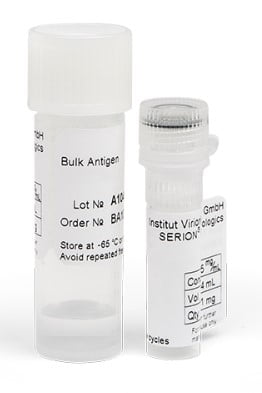
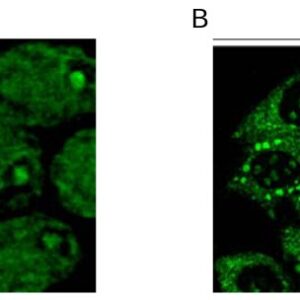
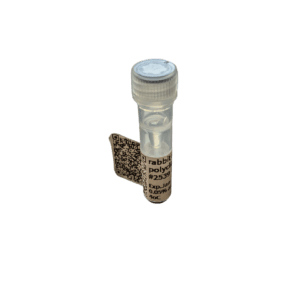
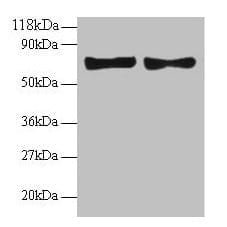
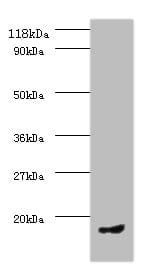

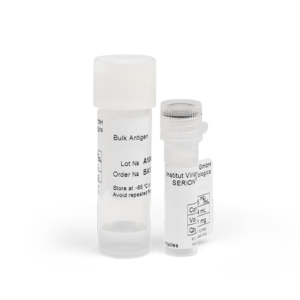
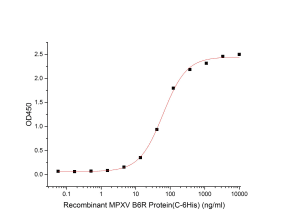
Reviews
There are no reviews yet.